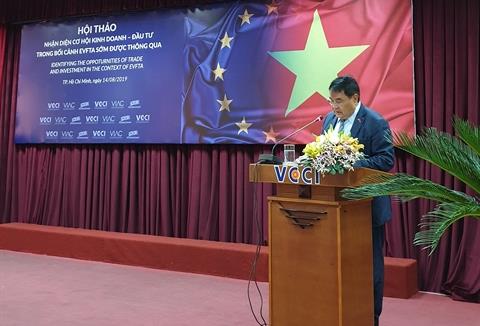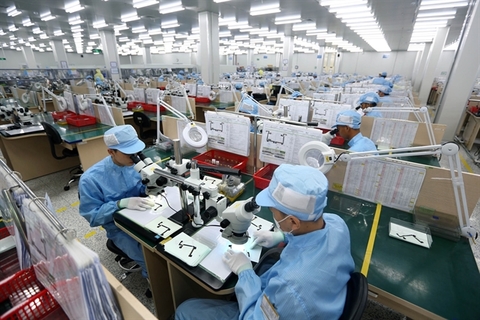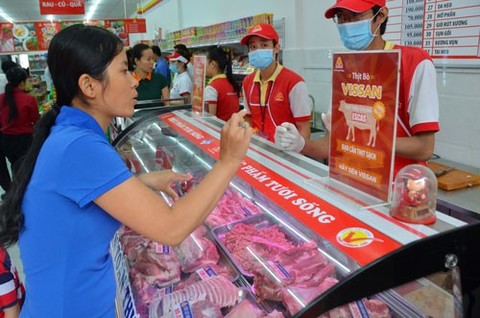Identifying opportunities for Vietnamese firms in the context of EU trade deal
Identifying opportunities for Vietnamese firms in the context of EU trade deal
The EU-Viet Nam Free Trade Agreement would provide a big impetus to Viet Nam's exports to the EU and be key to Vietnamese companies penetrating one of the largest and most lucrative markets in the world, experts have said.

Jean Jacques Bouflet, deputy chairman of EuroCham in Viet Nam, said Viet Nam is only the second country after Singapore in Southeast Asia that has “privileged access” to Europe’s 500-million consumer market following the signing of the agreement in June.
Viet Nam is among the top 10 exporters to the EU. It is the EU’s second biggest trade partner and largest exporter in Southeast Asia.
Speaking at a seminar titled “Identifying the opportunities for trade and investment in the context of EVFTA” in HCM City on April 14, Bouflet said Viet Nam’s exports to the EU would increase by 20 per cent in a decade and 40 per cent in the following decade.
EU investment in Viet Nam in key sectors such as automobiles and motorcycles, food, agriculture, aquaculture, green growth, transportation, and logistics have all contributed to its development, he said.
The EVFTA has a very short time frame for tariff reduction with many Vietnamese exports to the EU becoming exempt from tariffs within a few years.
Viet Nam's competitors in the region such as China, Thailand and Malaysia have not signed a trade deal with the EU, but that does not mean they never would, and businesses must move quickly to take advantage while Viet Nam is in an advantageous position, Bouflet said.
Nguyen Son Tra, deputy head of the WTO and trade negotiation division at the Ministry of Industry and Trade’s multilateral trade policy department, said the EU trade deal would be good for Viet Nam since right in the first year after the deal takes effect taxes on 70.3 per cent of the country’s exports to the EU would be reduced.
With a population of more than 500 million and a combined GDP of over US$15 trillion, accounting for 22 per cent of the world's GDP, the EU is an extremely large market and the largest exporter and importer in the world with annual trade of $3.8 trillion.
However, Viet Nam’s trade with the bloc is focused on certain countries like Germany, France, the UK, Netherlands and Italy.
Thus, there remain other countries with huge potential and opportunities for Vietnamese enterprises to seize when the EVFTA comes into effect since they have strength in tropical agricultural products, fisheries, textiles and garments, footwear, and furniture, experts said.
Recommendations
Tra said the country must adhere to Rules of Origin (RO) when exporting to the EU, especially because traceability regulations in importing countries have become increasingly strict.
Bouflet said since the EU is a highly demanding market, so exporters should also meet food safety and hygiene standards and management procedures set by it and incorporate social responsibility and transparency of information related to labour and the production environment.
Besides, some kinds of seafood products must comply with IUU (illegal, unreported and unregulated) fishing regulations.
A legal framework for the origins of Vietnamese products and products with “Made in Viet Nam” labels should also be created, he said.
Producers’ self-certification of origin must comply with Vietnamese regulations as well as EVFTA requirements on RO to prevent origin fraud, he warned.
The use of modern methods would ensure strict control over goods’ authenticity, quality and origin, he added.
















